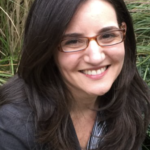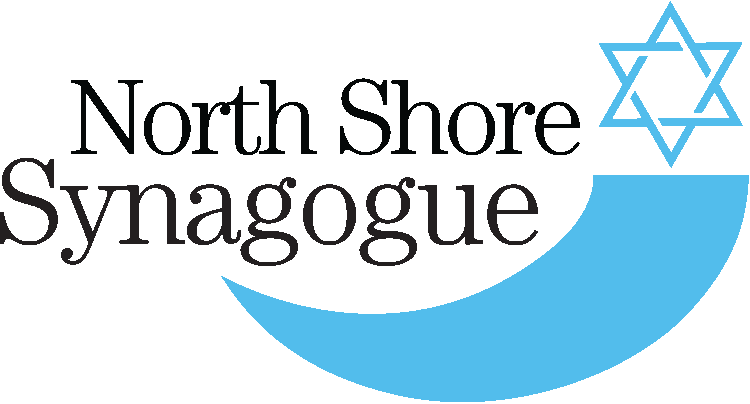 I remember hearing in college, from Professor Jyl Lynn Felman, that race is fluid. I remember thinking that was an insane statement. You couldn’t change your race, I argued. I couldn’t decide I was Black any more than a dove could choose to become a tiger. The class discussed for quite some time the definition of the word “race.” Our definitions ranged from those found in the dictionary:
I remember hearing in college, from Professor Jyl Lynn Felman, that race is fluid. I remember thinking that was an insane statement. You couldn’t change your race, I argued. I couldn’t decide I was Black any more than a dove could choose to become a tiger. The class discussed for quite some time the definition of the word “race.” Our definitions ranged from those found in the dictionary:
1. any one of the groups that humans are often divided into based on physical traits regarded as common among people of shared ancestry.
2. the fact of dividing people, or of people being divided, into such groups
3. a group of people sharing a common cultural, geographical, linguistic, or religious origin or background.
4. a group of living things considered as a category
To our own interpretations based on experiences:
1. “Race” refers to physical differences that groups and cultures consider socially significant, while “ethnicity” refers to shared culture, such as language, ancestry, practices, and beliefs.
While the sociology majors defined race this way:
1. Sociologists define race as a concept that is used to signify different types of human bodies. While there is no biological basis for racial classification, sociologists recognize a long history of attempts to organize groups of people based on similar skin color and physical appearance. The absence of any biological foundation makes race challenging to define and classify, and as such, sociologists view racial categories and the significance of race in society as unstable, always shifting, and intimately connected to other social forces and structures.
My brain hurt. How could race be socially constructed? Either a person was made of one race, or another, right?
And then professor Felman said one word that forever changed my closed-minded view of race. She said “holocaust.”
“One day”, she began, “you are walking down the main street of your town and you are German. Your race is Aryan. Your race is German. Your race is whatever is accepted. Jewish is your religion. And then the next day, you are told that your genetic make-up is different than that of your neighbor and now ‘Jew” is a race. Boom, your race has changed. It was fluid. And sadly, able to be defined by someone else.” This is what Whoopi Goldberg missed in her statements about the holocaust. She stated about the Holocaust, “But it’s not about race. It’s not. It’s about man’s inhumanity to other man.” There has been backlash against Ms. Goldberg directly following her statements and she has not only apologized, but used this mistake as an opportunity to reeducate herself about the Holocaust and educate herself about the entire idea of race. While I am deeply saddened that her original statements occurred on such a large screen, I am incredibly proud of and grateful to her for sharing her lessons learned on as many screens as she can, as well.
In the story of Purim that will occur soon, we see another case where Judaism is seen as something that needs to be hidden in order for a person to survive and rise in society. While we may all be aware of Mordecai’s monotheistic statement that he will not bow down to evil Haman because Jews only bow down to the one true God, that’s not at all what Purim is about. Mordecai and all the other Jews surely bowed to King Ahasuearus. Our tradition teaches that Mordecai wouldn’t bow to Haman because Haman was a descendant of Amalek, sworn enemy of the Israelite people in the bible. Interesting sidenote, but Purim isn’t about that either.
There is no mention of praying to God in the book of Esther. In fact, God isn’t mentioned even once. Neither is the god or gods of the Persians. Judaism isn’t seen in the story of Purim as a religion, but rather as a people, as a race. Jews are compared to Persians, not to Zoroastrians (as their religions would have them be called). And Mordecai is even referred to as “of Jewish stock,” (Esther 6:13) a clear reference to race.
Esther remains silent. She, even as a Jew herself, at first refuses to come before the king and declare racism. It takes Mordecai, convincing her that even she will not survive this ordeal, to make her finally stand up and call out Haman’s actions and the king’s implicit agreement for what it really is, racism and antisemitism.
Today, we are not only seeing a rise in antisemitism around the United States and the world, but we are also seeing a rise in people remaining silent about it.
Race is fluid, a social construct. But when the vocal few find us Jews a race or a people when it suits them, (The hostage taker in Texas demanded to speak to Rabbi Angela Buchdahl or Central Synagogue in New York City, because he wanted her to use her Jewish influence to secure the release of a terrorist) and yet not a race, also when it suits them, (That same hostage situation in Texas was called “not antisemitism” by the FBI because “the attack was focused on an issue not directly related to the Jewish community.” (https://www.independent.co.uk)), that fluidity and social construction is never more evident. Let us not forget that the first person to ever call us a “people” was Pharoah, who then used that to enslave us for 400 years.
Judaism is a people, a socially constructed race, a religion, and even a way of life. If we want to survive and thrive, we must claim and cling to all of those definitions. We must stick together. And, like Esther finally learns at the end of her own story, we must speak out before it’s too late.

Judaism and Race (Rabbi Shalhevet)
April 8, 2022 by nssadmin • Blog
1. any one of the groups that humans are often divided into based on physical traits regarded as common among people of shared ancestry.
2. the fact of dividing people, or of people being divided, into such groups
3. a group of people sharing a common cultural, geographical, linguistic, or religious origin or background.
4. a group of living things considered as a category
To our own interpretations based on experiences:
1. “Race” refers to physical differences that groups and cultures consider socially significant, while “ethnicity” refers to shared culture, such as language, ancestry, practices, and beliefs.
While the sociology majors defined race this way:
1. Sociologists define race as a concept that is used to signify different types of human bodies. While there is no biological basis for racial classification, sociologists recognize a long history of attempts to organize groups of people based on similar skin color and physical appearance. The absence of any biological foundation makes race challenging to define and classify, and as such, sociologists view racial categories and the significance of race in society as unstable, always shifting, and intimately connected to other social forces and structures.
My brain hurt. How could race be socially constructed? Either a person was made of one race, or another, right?
And then professor Felman said one word that forever changed my closed-minded view of race. She said “holocaust.”
“One day”, she began, “you are walking down the main street of your town and you are German. Your race is Aryan. Your race is German. Your race is whatever is accepted. Jewish is your religion. And then the next day, you are told that your genetic make-up is different than that of your neighbor and now ‘Jew” is a race. Boom, your race has changed. It was fluid. And sadly, able to be defined by someone else.” This is what Whoopi Goldberg missed in her statements about the holocaust. She stated about the Holocaust, “But it’s not about race. It’s not. It’s about man’s inhumanity to other man.” There has been backlash against Ms. Goldberg directly following her statements and she has not only apologized, but used this mistake as an opportunity to reeducate herself about the Holocaust and educate herself about the entire idea of race. While I am deeply saddened that her original statements occurred on such a large screen, I am incredibly proud of and grateful to her for sharing her lessons learned on as many screens as she can, as well.
In the story of Purim that will occur soon, we see another case where Judaism is seen as something that needs to be hidden in order for a person to survive and rise in society. While we may all be aware of Mordecai’s monotheistic statement that he will not bow down to evil Haman because Jews only bow down to the one true God, that’s not at all what Purim is about. Mordecai and all the other Jews surely bowed to King Ahasuearus. Our tradition teaches that Mordecai wouldn’t bow to Haman because Haman was a descendant of Amalek, sworn enemy of the Israelite people in the bible. Interesting sidenote, but Purim isn’t about that either.
There is no mention of praying to God in the book of Esther. In fact, God isn’t mentioned even once. Neither is the god or gods of the Persians. Judaism isn’t seen in the story of Purim as a religion, but rather as a people, as a race. Jews are compared to Persians, not to Zoroastrians (as their religions would have them be called). And Mordecai is even referred to as “of Jewish stock,” (Esther 6:13) a clear reference to race.
Esther remains silent. She, even as a Jew herself, at first refuses to come before the king and declare racism. It takes Mordecai, convincing her that even she will not survive this ordeal, to make her finally stand up and call out Haman’s actions and the king’s implicit agreement for what it really is, racism and antisemitism.
Today, we are not only seeing a rise in antisemitism around the United States and the world, but we are also seeing a rise in people remaining silent about it.
Race is fluid, a social construct. But when the vocal few find us Jews a race or a people when it suits them, (The hostage taker in Texas demanded to speak to Rabbi Angela Buchdahl or Central Synagogue in New York City, because he wanted her to use her Jewish influence to secure the release of a terrorist) and yet not a race, also when it suits them, (That same hostage situation in Texas was called “not antisemitism” by the FBI because “the attack was focused on an issue not directly related to the Jewish community.” (https://www.independent.co.uk)), that fluidity and social construction is never more evident. Let us not forget that the first person to ever call us a “people” was Pharoah, who then used that to enslave us for 400 years.
Judaism is a people, a socially constructed race, a religion, and even a way of life. If we want to survive and thrive, we must claim and cling to all of those definitions. We must stick together. And, like Esther finally learns at the end of her own story, we must speak out before it’s too late.